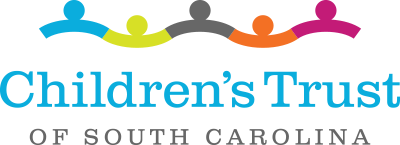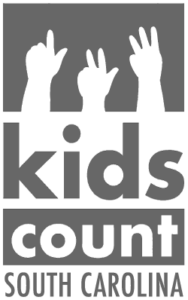Shannon Palm, the Children’s Trust Lipscomb Safe Kids and policy intern, took part in a recent poverty simulation hosted in our organization’s office. She details the difficulties that impoverished families and children in this state experience in their daily lives.
Walking into a room filled with people, I did not know what to expect.
Children’s Trust of South Carolina was partnering with Richland County First Steps on this January day for a poverty simulation hosted by SC Thrive, a statewide organization that works to provide efficient access to quality-of-life resources that can help stabilize lives.

Shannon Palm
I knew the exercise would be more than a three-hour break from work. After all, this simulated experience of a four-week time period is the real life of over 289,000 children in South Carolina currently living in poverty.
Low-income families must make difficult daily decisions that can have negative impacts on their physical and mental health. The simulation enlightened the 60 participants – through fictional scenarios and time constraints – about the day-to-day struggles of living in poverty and learn how it affects communities in a larger way.
For the simulation, I played Francina Fuentes, a 14-year-old girl who had little motivation to attend school and a lot of worry. In my family’s scenario, I realized, along with my single mother and 17-year-old brother, that we were in big trouble.
With only two transportation vouchers allotted to our family, we tried to strategize. We needed to get enrolled in government services, land babysitting jobs, find a job for my mother, and get my brother with a girlfriend who’s expecting a baby re-enrolled in school. This is commonplace for the 356,000 real children in South Carolina whose parents lack secure employment.
There were other families all around us frantically trying to pay their bills, get children to school, and sign up for services so they didn’t lose their homes, their children or their livelihoods. This simulation began to feel real very quickly.
As a child, I soon met the other children, first in school and then in juvenile detention. Parents didn’t have enough money, time or transportation options to get all their responsibilities filled and still meet the regulations of child supervision.
In my second week, I was picked up by a police officer and brought to juvenile detention for lack of supervision when child protective services were full. I later went back for truancy and “causing trouble” through a few desperate acts to make money for my struggling family.
While parents worked to make a wage that didn’t cover their living expenses, the lines for assistance grew longer until the closed signs went up. Feelings of anxiety, abandonment, anger and despair ran rampant among the children. This is the real experience of 56 percent of young children in South Carolina who are not in school.
Taking the time or the chance to uncover other potentially-helpful resources became impossible. Even health care wasn’t utilized except in cases of emergency.
In some cases, families banded together and shared their resources to make ends meet. However, sharing of resources wasn’t enough to help every family. In the discussion that took place after the simulation, many participants stated that, contrary to their character, they sought information about how to get involved in black-market revenue streams to increase their chances of survival.
Other participant reactions ranged from shock to resolute acceptance. Living this life, even for a short while, strengthened the group’s collective resolve to educate and advocate after reflecting on the lack of economic well-being for children in South Carolina.
The result of this simulation proved that structural barriers to families, such as inflexible work schedules and inadequate transportation options, perpetuated their cycle of poverty far more than any lack of effort.
Widening the lens on poverty through this simulation made clear that giving kids a chance to achieve must be reached through a coordinated public effort to remove barriers to relief.
For More Information
To learn more about child outcomes in South Carolina, visit the Children’s Trust KIDS COUNT webpage. A major initiative of the Annie E. Casey Foundation, KIDS COUNT provides high-quality data and trend analysis. This valuable information is used to guide decisions on ways to improve child well-being in South Carolina.
To host your own Interactive Poverty Simulation, visit SC Thrive.





